Welcome to Natural Wonders! I like to write about the interesting phenomena I encounter in the woods because in our busy, frantic and increasingly anxious world, it’s easy to forget that just outside is a much more peaceful place that doesn’t care about the gloomy news on your phone. If you want to read past issues click here, and if you were forwarded this email and want to subscribe, click the button below:
THEY’RE BAAAAACK!!
Imagine you’re riding your mountain bike along a flowy path through the woods, skimming along the ground and around banked turns. You can’t help but grin widely as you set up for the next curve when
SPLAT!
Wrapped around your face is a tangle of sticky spider web, with a palm-sized yellow spider hanging somewhere near your ear, threatening to crawl through the vents and into your helmet. Understandably, you go berserk, flailing your hands about as your bike continues to careen through the forest, no longer on the path you’d so clearly intended. At some point, you and your bike part ways, but the spider decides to stick with you, possibly because it has no choice considering the tangled web it's woven. At any rate, you eventually land – hard – still frantically trying to find the spider because a spider crawling on you is somehow worse than the broken collarbone you may or may not now have.
If you live anywhere near the Atlanta, Georgia area of the southern United States, you probably know that last year we had an explosion of invasive Joro spiders from Japan. Joros are huge yellow and black spiders that probably arrived in north Georgia via container ship. The rumor is they were first noticed around the Amazon fulfillment center near Hoschton, Georgia. They build enormous, messy golden-yellow webs out of extremely strong silk – it’s strong enough that I’ve bounced my face off the connecting outrigger strands a few times while walking.
The more I read about these spiders, the less I think they’re a harmful invasive species – supposedly they eat stinkbugs, and the idea that they replace and outcompete our native writing spiders may not be true.
However, I am NOT a fan of their tendency to spin their webs at head-height along biking and hiking trails and then hang out center-web, waiting to land in the middle of your face. They are large when full-grown, slightly smaller than my hand.
We saw our first Joro a couple of years ago near a shipping crate we’d recently received from China. We sent a photo off to the University of Georgia but didn’t hear back about whether we should kill it. The next year we saw just a few in the woods, nothing to worry about.
By last September they covered our home-grown bike trail to the point that I couldn’t ride for all the sticky, golden webs crossing the path. I decided I needed to do something. I grabbed a can of spider spray, put on a dust mask, and headed to the woods. I walked our 1.6-mile trail, spritzing every Joro I found (I felt slightly guilty, but comforted myself with the fact that they’re invasive). That first day, I killed 127 spiders in two hours. That’s verging on horror-movie amounts right there.
Three weeks later I repeated the walk and only killed 52. ONLY 52?! Still a massive amount of hand-sized, face-splatting spiders. Two weeks later, I found just 30. Project Joro Eradication seemed to be working.
But then I read about the proliferation of the spiders in our area and realized I was probably fighting a losing battle. This past May we found the Blob in our yard, and while I don’t know if those were Joros or not, it appears that they got here somehow, because right now we have little 2-inch Joros building messy nests everywhere we look:
We found six spiders in separate webs in a 25-square foot area underneath our cherry trees.
Compounding this feeling of dread upon discovering the Joro’s return is a random fact I read last week that offhandedly mentioned that ALL spiders are venomous. Seriously?! Should I be worried?
Are all spiders poisonous?
The first thing I discovered is that there’s a difference between poisonous and venomous. Something is poisonous if you ingest or inhale or touch it. For instance, some ivy can be poisonous if you touch it or eat it, as I have regrettably discovered. Something is venomous if it sinks its fangs into you and injects a toxic venom. Dangerous snakes are venomous, but they’re not poisonous because they’re not dangerous to eat or touch.
(Interestingly, however, I did find out that you should not eat the friendly little garter snake – it actually IS poisonous because its body stores toxins from the newts and salamanders it eats.)
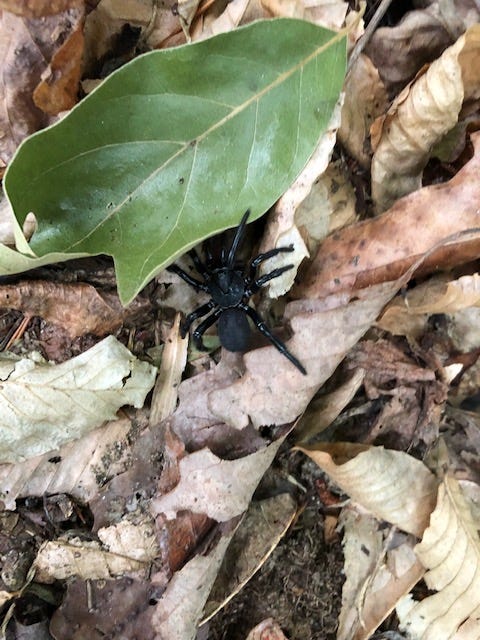
It is true that (almost) all spiders are venomous. They need their venom, which is an insecticide, to paralyze their prey when they wrap it up and store it in a corner of their webs. Only two types of spiders are not venomous and instead rely on their “hackled,” or very fuzzy web silk to immobilize their prey before wrapping them up.
The good news is twofold:
Most venomous spiders are reluctant to bite humans because it takes so long for them to replenish their venom afterwards. Since they need the venom to kill their prey, some spiders may even die from starvation while waiting for their bodies to replace their venom. So, they tend to run away to the edges of their webs as soon as they sense a large presence looming nearby.
The other good news is that while there are around 50,000 species of spiders in the world, only 25 cause illness in humans (that’s 1/20 of 1% of spiders that are harmful). These 25 species are considered “medically significant” and fortunately it turns out there are only around 1-3 harmful spiders in any one area of the planet (except for Australia, which seems to have a reputation for concentrations of venomous/dangerous animals of all sorts, including spiders).
So, while our Georgian Joros build their gigantic nests in inconvenient places, they aren’t a threat because they tend to run away rather than bite humans and they have small mouth parts that mean their occasional bites just feel like a bee sting.
What about Daddy Long Legs spiders?
I’ve always heard that one of the most venomous spiders around is the Daddy Long Legs, and yet there’s no need to worry about them because their mouths are too small to bite a human. It would be like us trying to bite a basketball – there’s no way they can puncture our skin. Is this true?
It turns out – NO! This is a myth. Why aren’t they dangerous?
Because they aren’t even spiders!
Look at the picture above closely – while they do have eight legs, they only have one body part (spiders have two) and they only have two eyes, whereas most spiders have eight. Daddy Long Legs can’t spin silk, and they don’t even have venom glands. They eat decomposing vegetation and animal matter. Their true name is a “Harvestman.”
How can they have eight legs and not be a spider? They do fall in the arachnid class of animals, just like ticks and mites which also have eight legs, but they belong to a suborder called Opiliones. Spiders are in the order Araneae, ticks are in the order Acari, and Daddy Long Legs AKA Harvestmen are in the order Opiliones.
So, all those times I warily plucked a Daddy Long Legs off my legs while camping, I was worrying about nothing.
I probably shouldn’t worry about the Joros either. Perhaps I can learn to appreciate their unique coloring and their golden webs in the same way that I like writing spiders because they make me think of Charlotte’s Web. But ask me again in September, once the Joros are fully grown…
What about you? Do you love spiders? Do they creep you out? Do you have a funny story to tell about a spider encounter? Please share!
Nature break: Now is the time of year when spiders begin to be more noticeable. They’ve been here since spring, but they know Halloween is coming so they’re gearing up by growing bigger and building huge webs. Take a moment to squat near a web and watch the spider. It’s even better if you can see it repair damaged sections of its web. How is it balancing on the silken strings? Does it seem to have a pattern to the layout of its web? Has it successfully captured any insects?
Weird Nature:

Detritus:
Some spiders catch fish as their prey – this video shows one in action.
The most venomous spider in the world is the Sydney funnel-web spider, which looks disturbingly similar to the trapdoor spider I saw above.
The research on headbanging woodpeckers has been updated! A recent study has determined that woodpeckers don’t absorb the shock of pounding on wood with a seatbelt bone like I’d previously understood. The new research suggests their survival might have to do with their smaller, rounder brains, which I also mentioned in my post as a slightly less-interesting contributing factor to their lack of brain damage. I just goes to show that animals are so fascinating that we’re still trying to figure out their secrets in the 21st century.
If you want a fascinating, fairly simple explanation of what all those cool photos from the James Webb telescope are about, check this article out. The photos are amazing and humbling and put our puny problems into perspective.
If you liked this issue, please click the “like” button below - it makes me happy and also raises the profile of this newsletter!




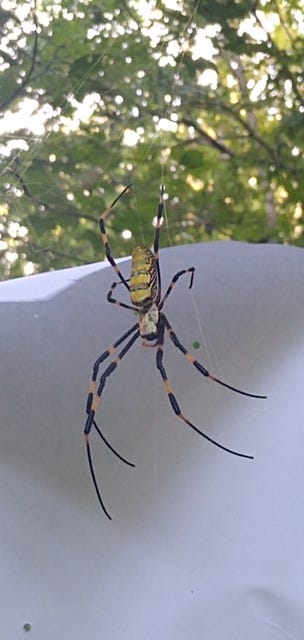
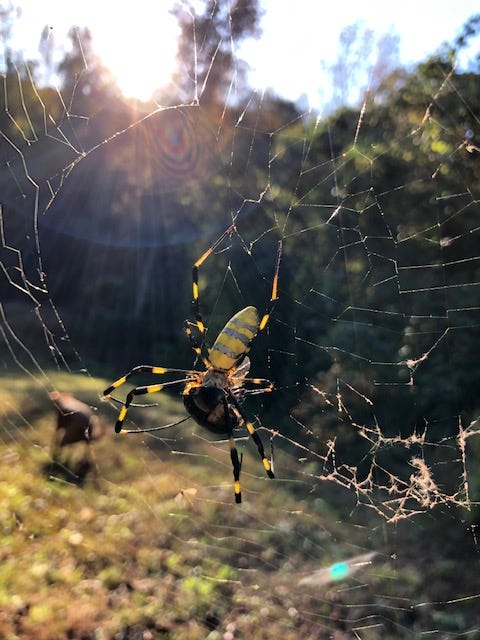
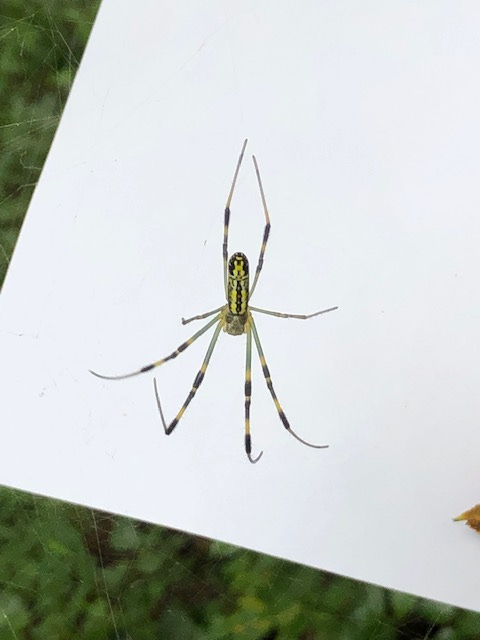
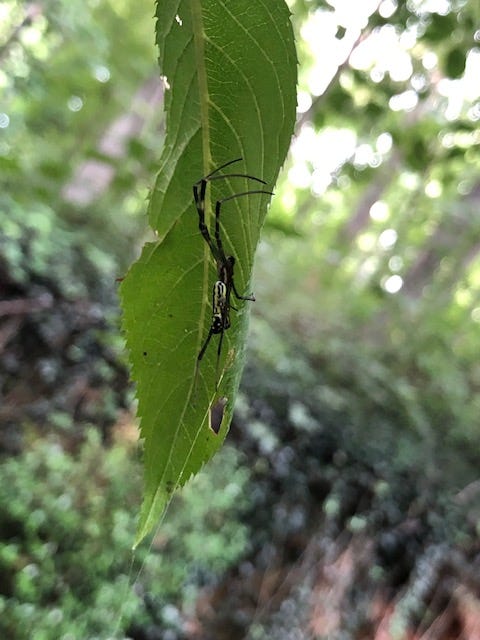
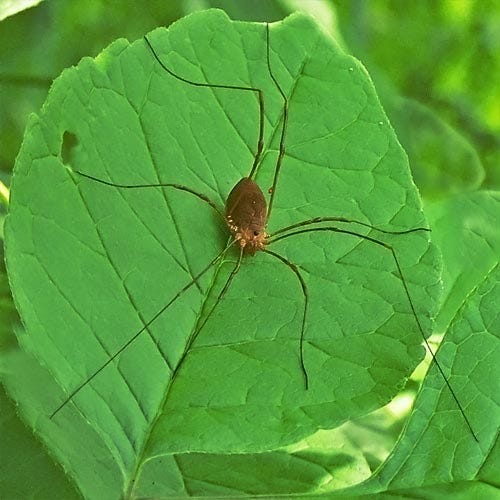
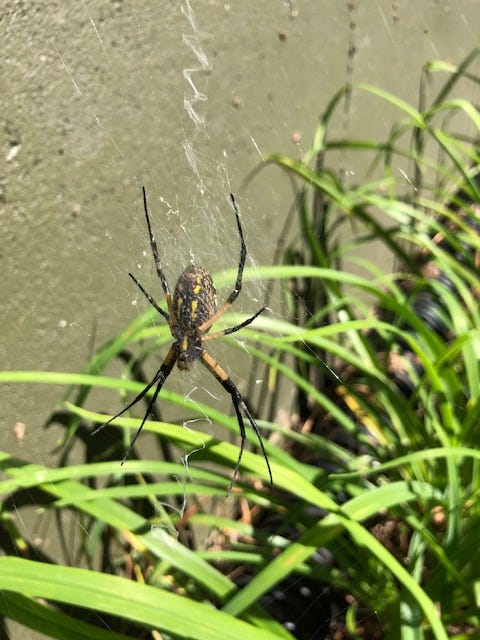
Happy to see all the pictures of the spiders than to see them "in person" like around my head!!!
Laura
We'll watch out for you on the bike trails! 😆 I really enjoyed reading this...great information!